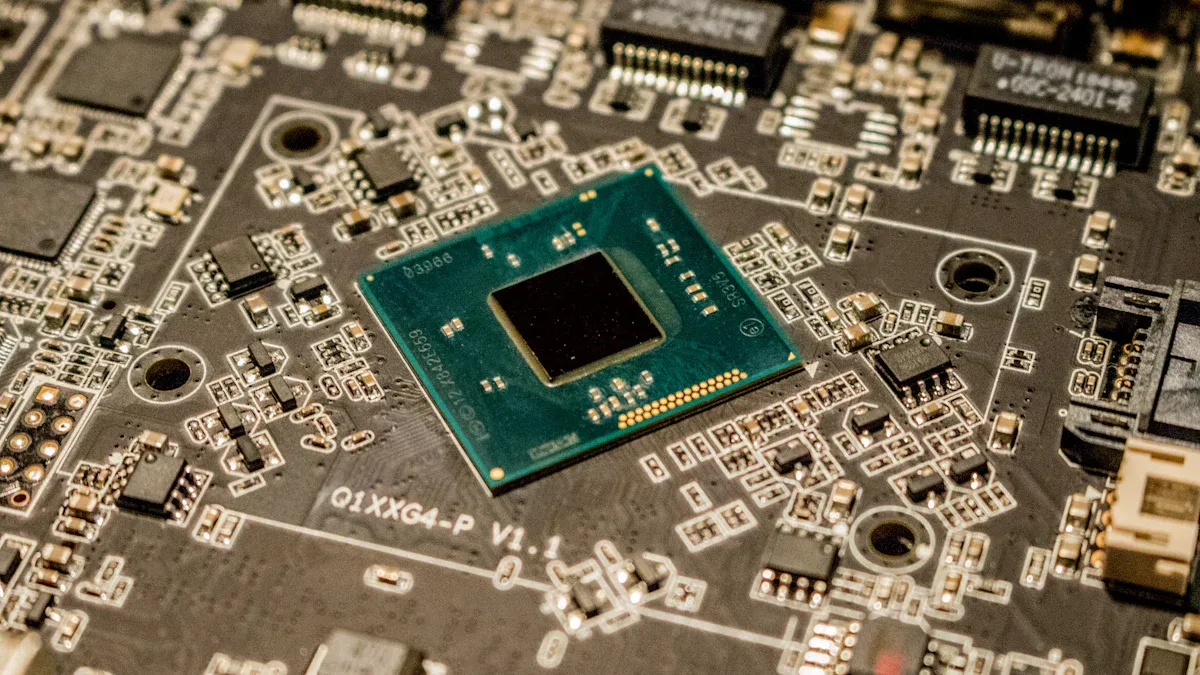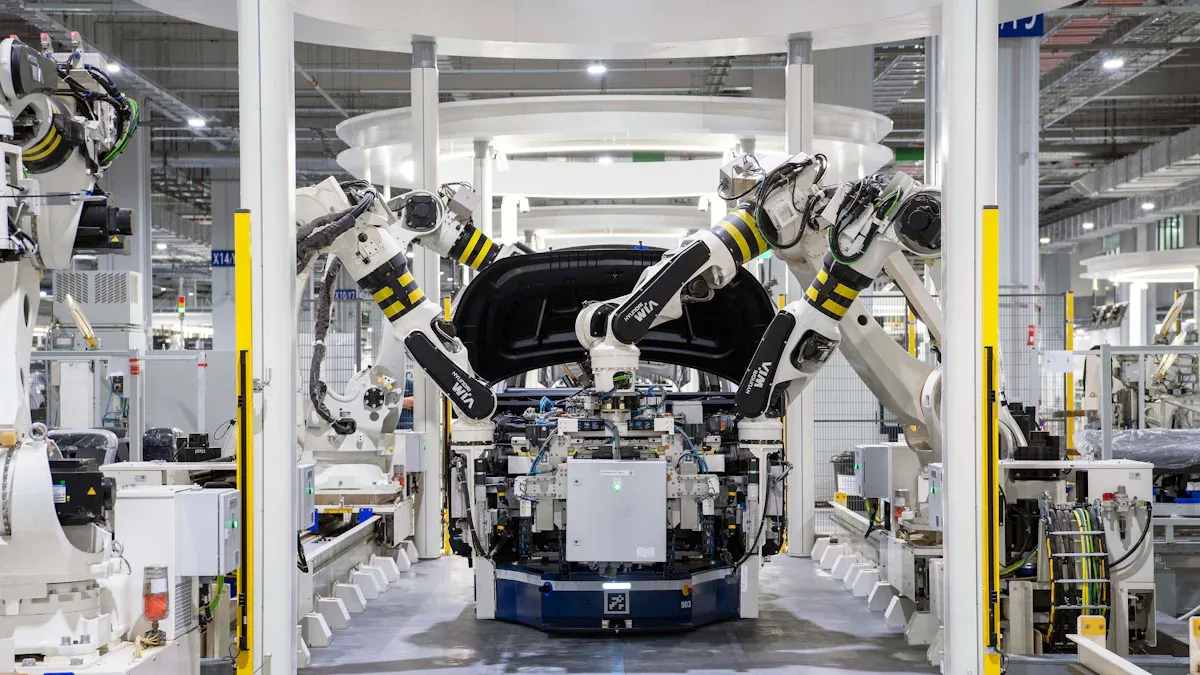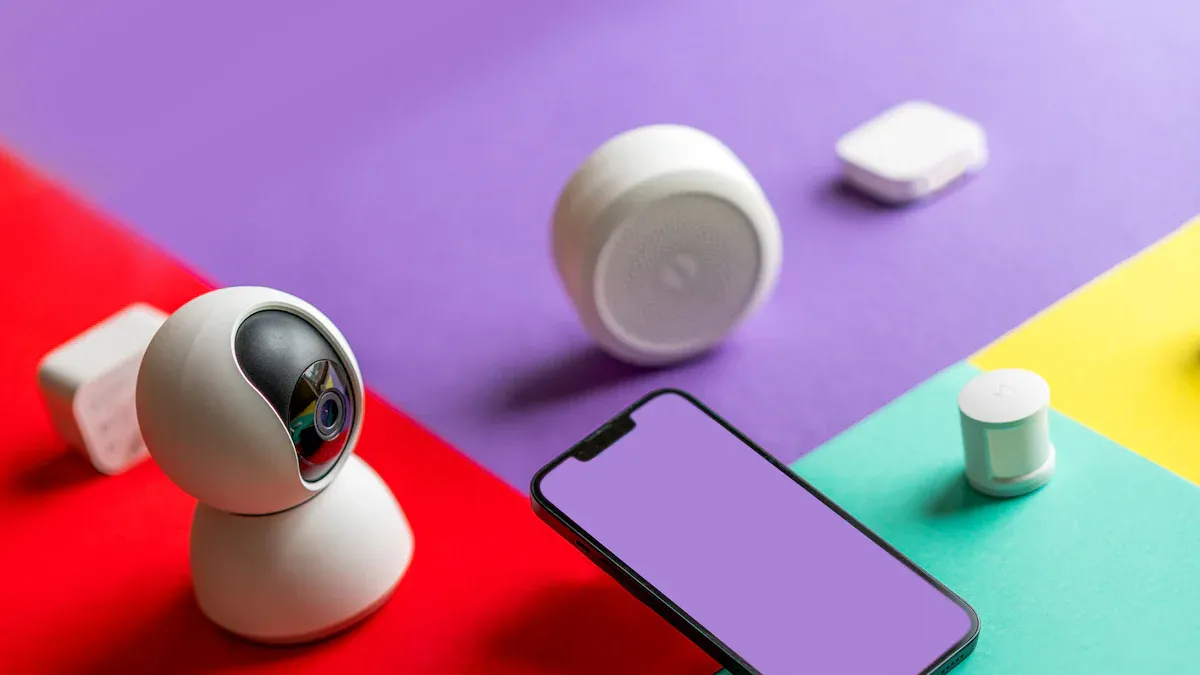
Printed Circuit Board Assembly (PCBA) is crucial for IoT device PCBA manufacturing. It helps make devices smaller, smarter, and more dependable. PCBA utilizes advanced parts to enable faster data transfer and conserve power. These features are essential for IoT to function effectively. As a result, high-density PCBs are increasingly popular in electronics. Experts predict that IoT in factories could generate $3.7 trillion annually by 2025. Additionally, PCBA reduces equipment failures by 70%, highlighting its significant impact on IoT device manufacturing.
Key Takeaways
PCBA helps make IoT devices smaller and work better. This allows for compact designs with more features.
Better PCB assembly improves wireless signals, making connections faster and more reliable.
Using low-power parts and smart energy-saving methods makes IoT device batteries last longer.
Automated PCB assembly makes production quicker and cheaper, creating better IoT devices.
Checking quality during assembly reduces mistakes and makes IoT devices more dependable.
Miniaturization in IoT Device PCBA Manufacturing

Compact designs for IoT devices
Making IoT devices smaller is very important. New technology lets devices be tiny but still work well. HDI PCBs help by using thinner lines and smaller parts. This lets makers fit more pieces into less space. It’s great for things like smartwatches and medical gadgets.
To make small designs, factories use special tools like SMT and pick-and-place machines. These tools put tiny parts exactly where they need to go. Shorter paths for signals also help save power and make devices work better. This makes IoT devices more reliable and energy-saving.
Multifunctional component integration
Today’s IoT devices do many things in one small unit. This happens because parts can now fit closer together. HDI boards allow more parts on smaller spaces, shrinking device size. High-density connectors also help devices work faster and better.
But fitting many functions in small spaces is tricky. Problems like heat, signal issues, and interference need fixing. Techniques like controlled impedance and special routing solve these problems. These methods keep IoT devices working well, even when they’re complex.
Space and weight efficiency in IoT devices
Saving space and weight is key for IoT devices. Smaller PCBs let makers design thinner and easier-to-carry products. Flexible PCBs bend into tight spaces, perfect for small gadgets. They also allow cool designs like foldable or wearable tech.
Making devices lighter is also important. Lightweight designs matter for planes and portable gadgets. Using advanced PCBA methods, factories make IoT devices small and light. This makes them easier to use and more popular.
Connectivity Advancements in IoT Through PCB Assembly

Wireless communication improvements
Wireless communication is very important for IoT devices. Better PCB assembly helps make connections faster and more stable. The use of 5G technology has increased the need for quick communication. IoT devices now use advanced wireless systems to send data smoothly.
The wireless market for IoT is growing quickly. This is because more people use smartphones and better networks are being built in new areas. New PCB designs help makers follow strict rules while offering great performance.
Here’s a look at key trends in wireless improvements for IoT devices:
Key Points | Details |
|---|---|
Growing Demand | 5G and advanced wireless systems are driving the need for faster communication. |
Expanding Market | More smartphones and better networks in new regions are boosting growth. |
Tech Innovations | New designs focus on high performance, strict rules, and lower costs. |
These upgrades help IoT devices stay connected, even in tough conditions.
Support for IoT protocols and standards
IoT devices need standard rules to work well together. PCB assembly adds parts that follow these rules. Devices use systems like Zigbee, Bluetooth, and Wi-Fi to connect with others.
By following these rules, makers ensure devices work well in different setups. This makes IoT devices useful in smart homes, factories, and hospitals. PCB assembly helps these devices talk to each other easily and reliably.
Reliable signal transmission in IoT devices
Good signals are needed for IoT devices to work right. PCB assembly improves signals by stopping interference and keeping them steady. IoT devices can send data correctly, even in noisy places.
Smart PCB designs use methods like shielding and controlled impedance to make signals better. These methods stop signal problems and keep connections strong. Whether for tracking, monitoring, or automation, good signals are key for IoT success.
Power Efficiency in IoT Device PCBA Manufacturing
Using low-power components
In making IoT devices, using low-power parts is important. These parts help devices use less energy and work better. With advanced low-power tech, devices save energy without losing performance.
Here’s why low-power parts are helpful:
Benefit | Description |
|---|---|
Low-power parts reduce how much energy devices need. | |
Better Tech Features | Smaller parts improve energy use and save more power. |
Adding these parts makes devices more reliable and energy-saving. This is especially useful for devices in faraway places. They need less fixing or battery changes, saving time and effort.
Smart power management
IoT devices send and get data often, which uses up batteries fast. Smart power management helps batteries last longer. It adjusts energy use based on what the device needs.
Some smart power-saving methods are:
Dynamic Voltage Scaling (DVS): Lowers voltage to save energy and keep devices cool.
Power Gating: Turns off power to unused parts to stop energy waste.
Clock Gating: Stops clock signals in unused areas to save power.
Using these methods during PCB assembly helps devices save energy. This is very helpful for IoT devices that need long-lasting batteries to work well.
Making batteries last longer
Long battery life is very important for IoT devices. It means fewer battery changes, saving time and money. Smart energy-saving ideas help batteries work better.
Techniques like DVS and power gating make batteries last longer. DVS changes voltage based on the device’s work, saving energy. Power gating turns off unused parts to stop wasting power.
Flexible PCB designs also help save battery power. They use smart layouts and parts to lower energy use while keeping good performance. This is key for IoT devices in homes, hospitals, and factories. These devices need to work well for a long time.
Tip: Choose energy-saving parts and smart power ideas when designing IoT devices. This makes batteries last longer and improves how users feel about the devices.
Streamlining IoT Device Manufacturing with PCBA
Automation in PCB assembly processes
Automation is key to making PCB assembly faster and better. Machines handle tasks like placing parts, soldering, and checking for mistakes. This saves time and ensures the same quality every time. Fewer mistakes mean quicker production and more reliable IoT devices.
Automation also helps save money:
It lowers labor costs by needing fewer workers.
Simplified processes cut down on running expenses.
Machines adjust quickly to changes, avoiding extra costs.
These advantages make automation essential for modern IoT device manufacturing.
Quality assurance and testing advancements
Quality checks make sure IoT devices are reliable. New testing methods find problems early, reducing mistakes during assembly. For example, X-ray checks after soldering spot issues before final assembly. This improves the quality of IoT devices.
Here’s how quality checks reduce errors:
Quality Check | How It Helps |
|---|---|
Clear assembly drawings | Prevents confusion and lowers board mistakes |
First article inspection (FAI) | Ensures parts are placed and aligned right |
Golden board comparison | Cuts human errors and speeds up inspections |
Post-solder X-ray checks | Finds problems early before final assembly |
Regular process reviews | Keeps quality high and reduces mistakes |
Using these checks makes IoT devices more reliable and avoids delays in production.
Cost-effective assembly techniques
Smart assembly methods lower costs without losing quality. Predictive maintenance keeps machines running and reduces downtime. Using less energy during production also saves money.
Here’s a list of cost-saving methods:
Method | How It Saves Money | Source |
|---|---|---|
Predictive Maintenance | Monitors machines to avoid breakdowns and cut costs. | Gleecus |
Energy Efficiency | Uses less power, saving money during production. | Gleecus |
Better Supply Chain | Data helps improve supply chains, lowering overall costs. | Gleecus |
Edge Computing | Cuts bandwidth costs by 30-40% and IT costs by 32%. | Gartner, Deloitte, 2023 |
By using these methods, you can save money while keeping IoT devices high-quality. Adding edge computing also reduces costs by cutting data and IT expenses.
Note: Keeping up with new PCB designs and methods helps your IoT devices stay ahead in the growing IoT market.
PCBA is important for improving how IoT devices are made. It helps create smaller gadgets, stronger connections, and smarter energy use. These improvements make devices work better, faster, and cost less to produce.
The IoT industry is growing quickly, with PCBA leading new ideas. Experts expect big changes in the market:
Time Period | Market Value (USD Billion) | Growth Rate (%) |
|---|---|---|
2025 – 2030 | 84.24 to 106.85 | 4.87 |
2025 – 2034 | 4.33 to 7.41 | 6.13 |
As IoT gets more advanced, PCBA stays key for making smarter devices. Using PCBA’s benefits helps you succeed in this fast-changing field.
FAQ
What is PCBA, and why is it important for IoT devices?
PCBA means Printed Circuit Board Assembly. It connects parts on a PCB to make devices work. For IoT devices, PCBA helps make them smaller, connect better, and save energy. This makes devices smarter and use less power.
How does PCBA improve IoT device connectivity?
PCBA boosts connectivity by adding parts for wireless systems like Zigbee and Bluetooth. It keeps signals steady, even in tough places. This helps IoT devices send and receive data easily.
Can PCBA help reduce manufacturing costs for IoT devices?
Yes, PCBA lowers costs by using machines, fixing problems early, and saving energy. These steps cut worker needs, stop delays, and use resources wisely. This makes making IoT devices cheaper.
How does PCBA contribute to longer battery life in IoT devices?
PCBA uses energy-saving parts and smart ideas like lowering voltage and turning off unused parts. These tricks help batteries last longer and need less fixing.
What role does automation play in PCBA for IoT devices?
Automation makes PCB assembly faster by doing jobs like soldering and checking for mistakes. It keeps quality the same, stops errors, and saves money. This helps make IoT devices quickly and reliably.
See Also
Why PCBA Manufacturing Skills Are Vital for Electronics Design
Enhancing Workflow Productivity in PCBA Manufacturing Processes
Understanding PCBA Manufacturing and Its Significance in Industry
Exploring PCBA Services and Their Importance in Electronics Production
The Significance of PCBA Metrics for Manufacturing Effectiveness